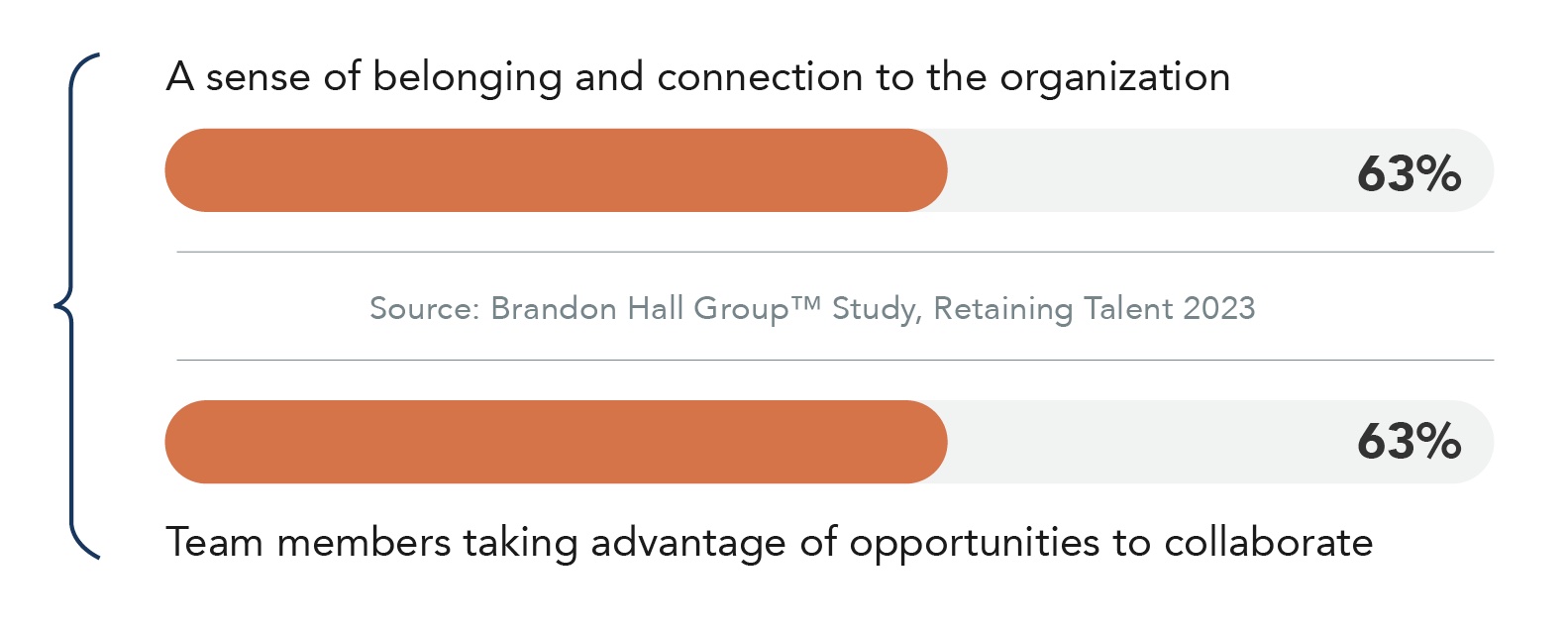
Retention of top talent is a top-of-mind topic for all high-performing organizations. According to research by Brandon Hall Group, 92 percent of organizations surveyed agreed that the top talent in their organization is at risk of leaving in the next year. Losing an exceptional employee is not just a disruption; it is also a costly setback. Expenses may include lost productivity, replacement costs, and decreased morale.
Complexities
Despite the clear benefits of retaining top talent, many organizations struggle to do so. The competitive landscape, increasing demands from employees for more fulfilling work experiences, and ongoing shifts in workplace dynamics have further complicated the matter. These ongoing challenges result in organizations being divided in knowing where to invest time and energy to best impact retention. Knowing which aspects of the employee experience or company culture to focus on varies somewhat based on the organization’s size.
Consequences
Our research shows that many organizations will make two cultural attributes their top priority over the next year:

Critical Questions
1. How can you identify the hidden superpowers of your team members?
2. What are some ways to create a connection between employees and a meaningful sense of belonging in a digitized world?
3. Are you communicating information up and down the organization continuously?
Brandon Hall Group POV
Consider these three high-level strategies to address increasing retention of your workforce:
1. Get to Know Those Hidden Superpowers: Organizations prioritizing respect, integrity, and open communication tend to have lower turnover rates. One way of demonstrating this is by fostering a strong connection between leaders and their team members. As a leader, carve out a few short pockets to check in with your team members. Notice what surrounds them in their workspace. I once learned that a team member practiced calligraphy as a hobby by noticing her desk’s beautiful notes. We put that to great use, helping us make the office look bright and beautiful. It’s not about the handwriting. It’s about the connection and recognition for contributing something seemingly non-work-related to help her team that made her feel seen, heard, and appreciated in a new way.
2. Build a Sense of Belonging to the Organization: Provide the space and time for team members, and their leaders, to get to know each other and learn about each other’s skills and strengths. When team members have a chance to get to know each other, they thrive. They are delighted and more connected after learning something new about each other. On the surface, it may not be directly work-related, but those capabilities can be filed away and brought up when needed. Ask curiosity questions that might seem to be irrelevant but serve as a catalyst for valuable interaction.
3. Foster Ongoing Communication: Up, Down, and Every Which Way: It’s been said that the role of the chief executive officer should be that of chief repetition officer. And for that matter, leaders at all levels. Crafting a meaningful and relevant message for the workforce and then repeating it, consistently over and over, to multiple groups is a powerful tactic all leaders should use. Messaging also should convey the company’s mission, vision, and values. It may feel uncomfortable, being so repetitive. Remember, the employees hear the message for the first time, or maybe even the second. Cognitively, people cannot absorb the entire news on the first or second hearing. Be prepared to convey the message with continued enthusiasm repeatedly.




